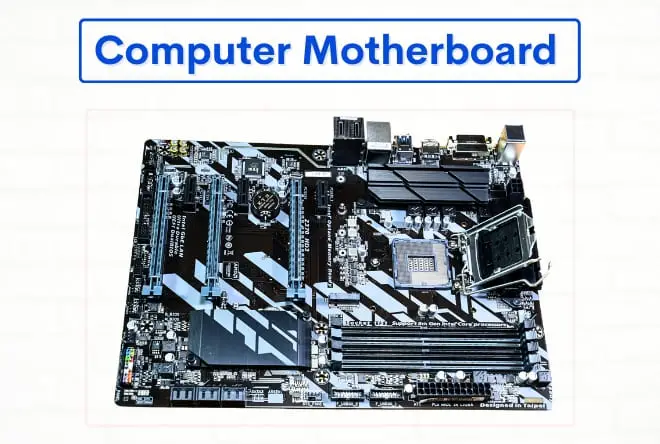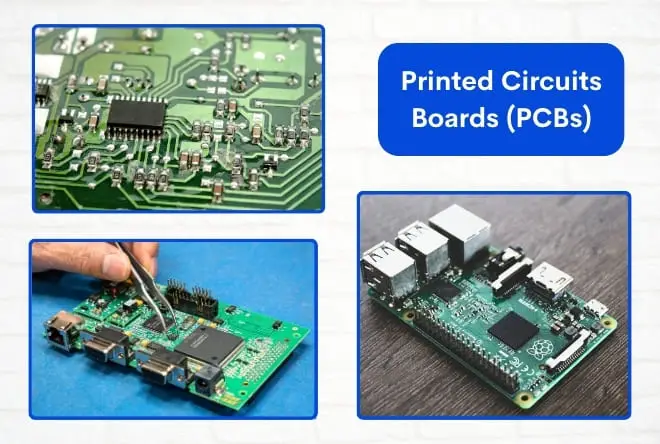Motherboard vs Circuit Board – Differences Simplified
When diving into electronics, “motherboard” and “circuit board” pop up frequently. They may seem interchangeable at first glance, but there is more to each than meets the eye.
A motherboard is a specific circuit board designed to be the backbone of computers and smartphones. They’re complex, housing various components that manage data and power flow like a nerve center.
Circuit boards, on the other hand, have a broader role in the electronics world. They’re the canvas on which electronic circuits are painted, found in everything from microwaves to space stations. Let’s delve into the nuances that define these essential electronic platforms.
Motherboard vs Circuit Board
What is a Motherboard?
When we talk about computer architecture, the role of the motherboard stands out as fundamental. It’s the central hub of a computer that performs several vital roles.
Acting as the main circuit board (PCB), the motherboard facilitates communication between the components, and thus, the Data and power management are two pivotal tasks it handles with precision.

The motherboard ensures everything, from the central processing unit (CPU) to memory and expansion cards, works in harmony. Without it, the individual parts of a computer would be unable to communicate, and as a consequence, the system unit wouldn’t function.
Major Components on a Motherboard
Breaking down the motherboard further, it has several major components for its operation:
- Central Processing Unit (CPU): Referred to as the computer’s brain, this component handles all instructions it receives from hardware and software running on the PC.
- Random Access Memory (RAM): This is where the system stores data actively being used or processed by the CPU.
- Power Connectors: They supply the motherboard and all connected components with the power supply unit.
- Expansion slots and Sockets: These include PCI slots for expansion cards, memory slots for RAMs, M.2 slot for storage, and the CPU socket.
- Chipset: This controls data transfer between the processor, RAM, hard drives, and other peripherals.
- Input/Output Ports: These ports let you connect external devices, like USB, HDMI, and audio jacks.
- BIOS/UEFI Firmware: This software built into the motherboard starts the computer and helps manage data flow between the operating system and connected devices.
Additionally, the motherboard contains circuit pathways that enable different parts of the PC to communicate with one another. It’s an advanced balance of technology that has evolved tremendously but keeps its core purpose – collaboration between these components on the main board allows computers to perform the complex tasks we demand daily.
What is a Circuit Board?
Understanding what a circuit board is is essential in learning modern electronic functions. A circuit board, often known as a printed circuit board or PCB is the cornerstone of electronic engineering. It’s more than just a stable base for various components; it’s a masterful mix of tiny conductors made as pathways that allow devices to perform their intended functions effectively.

Why a Circuit Board Is Critical:
- It provides a structured physical platform for electronic components.
- Conductive paths etched onto the board enable connectivity between components.
- PCB minimizes the space needed for wiring and streamlining complex and main circuits within a compact footprint.
- They are vital in ensuring consistency and reliability in the operation of the electronic device.
PCBs are often found as the foundation of both simple and complex systems, making them ubiquitous in today’s technologically laden environment.
Differences between Motherboard and Printed Circuit Board (PCB)
1. Functionality
I understand that the words ‘motherboard’ and ‘circuit board’ might seem similar, but their functions in electronic systems are different.
A motherboard, specifically, is designed to integrate circuits and enable communication between crucial computer components like the CPU, RAM, GPU, and storage devices. Its role is akin to the nervous system of a computer, arranging the operation of the entire machine.
On the other hand, a circuit board—often called a PCB—has no specific function but serves as the backbone for many electronic devices, connecting resistors, capacitors, and other components vital for functionality.
2. Design and Layout
Designing a motherboard is a high-precision task, with different shapes or form factors like ATX and mATX to maintain consistency in building computer systems. It has specific ports, connectors, and sockets to support various peripherals.
These motherboards boast multiple layers of circuit boards, often ranging from 4 to 8, to accommodate complex circuit routing and ensure high-speed signal.
Meanwhile, the design and layout of a typical circuit board consists of conductive pathways and copper traces, which are more flexible, allowing for customization in size and layer density based on specific device requirements.
The complexity and specificity of the design largely depend on the intended use of the PCB. While some are dedicated to everyday gadgets, others form the backbone of advanced computing systems like motherboards.
3. Components
The motherboard supports a vast array of components: CPU, RAM, hard disks, and a wealth of expansion slots type – enhancing functionality through additional cards, such as graphics cards, cards, and network cards.
On the flip side, PCBs support various electronic units and connections for components like resistors, capacitors, and sophisticated microchips required for a device’s operation. Although more generalized than those on a motherboard, these components are nonetheless tailored to the device’s needs.
4. Scope
The scope of use for a motherboard is limited mainly to computing systems and equipment, where precision and reliability are paramount.
PCBs, in contrast, have a much broader scope, being the essential structure within a multitude of electronic products into nearly every electronic product—ranging from simple household devices to industrial machinery, making them fundamental to our digital and connected world.
5. Cost
Regarding cost, a motherboard is relatively expensive, reflecting its complexity and the high-end materials needed for its manufacturing. PCB costs vary widely; they can be inexpensive for simple designs but super expensive for more complex and multi-layered boards.
Difference between a Motherboard and a Circuit Board (Table)
Aspect | Motherboard | Circuit Board (PCB) |
Function | Main circuit board in a computer | Backbone of electronic devices |
Components | CPU socket, RAM slots, expansion slots (PCIe), USB ports, and other integrated circuits. | Connectors, traces, Resistors, capacitors, microchips (e.g., power supply board, control board, etc.), etc. |
Size and Form Factor | Typically larger and follows standard form factors like ATX, microATX, or mini-ITX. | Can vary widely in size and form, depending on the specific application and space constraints. |
Integration | Central hub for computer components | Foundation for electronic device circuitry |
Uses Scope | Computing systems | Broad range of electronics |
Examples | Examples include the main circuit board in a desktop computer, laptop motherboard, or server motherboard. | Examples include a power supply board in a TV, a control board in a washing machine, or a motherboard in simpler electronic devices. |
Cost | Generally higher | Low to high, depending on the design |
FAQs
Is the motherboard circuit board?
Yes, a motherboard is a circuit board designed specifically for computer use. However, a circuit board can refer to any board with electrical circuits, making them more generalized than motherboards.
Can circuit boards be used in place of motherboards?
In most cases, no. Motherboards are tailored specifically for computer use and contain specialized components not found on standard circuit boards. However, in some cases, a modified circuit board can function as a basic motherboard.
Does every electronic have a motherboard?
Only some electronic devices have a motherboard. Motherboards are primarily found in computers and other complex machines. Meanwhile, other devices use standard circuit boards for their functionality.
Are motherboard and circuit board interchangeable terms?
Motherboard and circuit board are related but not interchangeable. A motherboard is a specific type of circuit board designed to integrate computer components, while circuit boards are used in various electronic machines.
Do motherboards have different design and cost compared to other circuit boards?
Motherboards have different designs, typically featuring slots and sockets specific to computer components, and the cost can vary based on complexity, size, and additional features.
Conclusion
Understanding the distinctions between motherboards and circuit boards is crucial for anyone delving into electronics. I’ve walked you through the specific roles of motherboards as the nerve center of computers and how they differ from the more ubiquitous circuit boards in various devices.
Remember that while all motherboards are circuit boards, not all circuit boards are motherboards. Each has a unique purpose and functionality, but they are both critical components in technology.
[Related]
- DRAM light on Motherboard – What Does It Mean?
- 4 Types of CMOS Battery used for Motherboard
